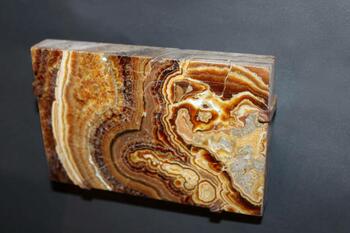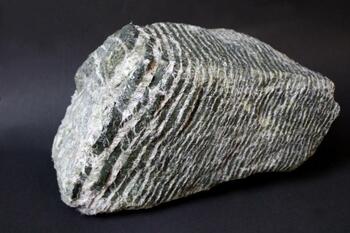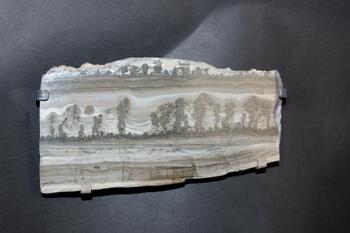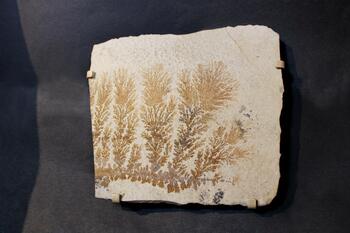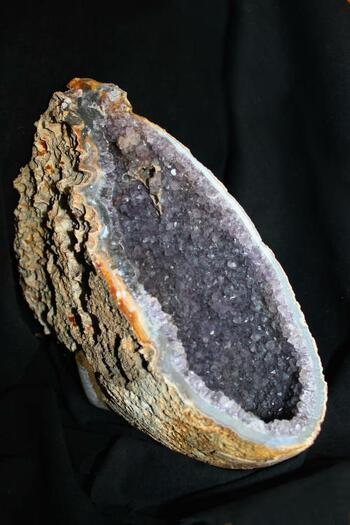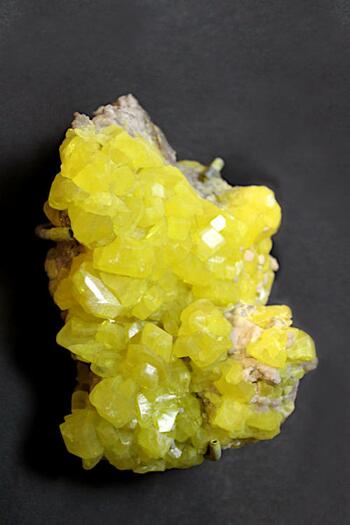While geological phenomena have been polished, modified, and adapted into works of art, in many cases, the natural form can be viewed for its aesthetic merit. Here is just a small sample of natural specimens from the Museum’s collection that illustrate Nature’s Art.
Sample of Travertine marble
Marble is a metamorphosed form of limestone; however, the term is often used for stones with attractive textures and colors. Travertine, like the example here, has swirling patterns formed by the precipitation of calcite from ground water or in hot springs.
Sample of serpentine rock with veins of asbestos
Asbestos is a term used for a group of fibrous minerals known for their high tensile strength, flexibility, and heat resistance. For these reasons, asbestos has been used in building materials. However, when the fibers are airborne, asbestos is carcinogenic. Found here, in its natural state in the mineral chrysolite, the asbestos lines appear aesthetically pleasing.
Specimen of landscape marble, showing distinctive pattern
The natural formation of this marble resembles a landscape painting.
Example of dendrites
Often mistaken for fossils, this is known as a dendritic crystal and is formed when fissures in the rock are filled with percolating mineral solutions. The result is an intricate, tree-like pattern in the surrounding rock.
Amethyst geode
A geode is a hollow ball of rock encrusted with crystals. The crystals form when silica or carbonate-rich liquid seeps through the rock and the dissolved minerals crystallize in the available cavities. The resulting formations can be quite beautiful.
Sulfur crystals
Sulfur is an idiochromatic mineral, meaning that it is always the same color due to specific light-absorbing atoms in the crystal structure. However, when combined with other atoms and molecules, sulfur-rich compounds can appear blue, as in lapis lazuli.
